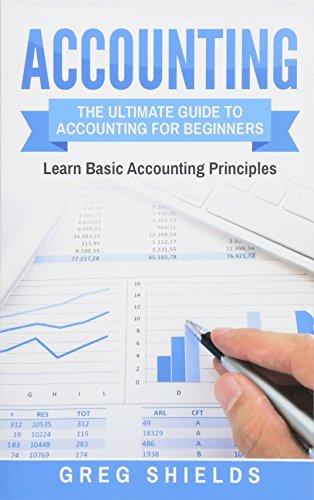

7. Treasury Inflation Protected Securities. Since 1997. the US Treasury has provided 100+20 inflation insurance to interested parties through its TIPS program. Treasury Direct explains "Treasury Inflation Protected Securities (TIPS) are marketable securities whose principal is adjusted by changes in the Consumer Price Index. With inflation (a rise in the index), the principal increases. With a deflation (a drop in the index), the principal decreases. The relationship between TIPS and the Consumer Price Index affects both the sum you are paid when your TIPS matures and the amount of interest that a TIPS pays you every six months. TIPS pay interest at a fixed rate. Because the rate is applied to the adjusted principal, however, interest payments can vary in amount from one period to the next. If inflation occurs, the interest payment increases. In the event of deflation, the interest payment decreases. At the maturity of a TIPS. you receive the adjusted principal or the original principal, whichever is greater. This provision protects you against deflation.... TIPS are issued in terms of 5 (auction dates: April. *August, *December), 10 January, March *May, July, September. *November), and 30 (February, June, *October) years" (* denotes a reopening, in which the US Treasury sell an additional amount of a previously issued security: www.treasurydirect.gov/indiu/research/indepth/tips/res_tips.htm). You might also want to refer to the attached analyst report by HIMCO (May 2014), The Case for Treasury Inflation-Protected Securities. (a) What is the rationale to invest in a TIPS? Does it still hold? (b) Consider a normal UST security and and otherwise completely equivalent TIPS. Which one should carry a higher yield, the TIPS or the nominal UST security? Explain. (c) Can the yield (to maturity) of a TIPS ever become negative? Why or why not? Explain. (d) How much have investors apparently been willing to pay for this privilege recently? You might want to consult recent US Treasury auction results carefully documenting your information source and data. (e) Optional. In 2001, the US Treasury issued the following 10Y TIPS maturing in July 20 2014: CUSIP NUMBER Dated date Original issue date Additional issue date Maturity Date Ref CPI on Dated date 912828CP3 July 15, 2004 July 15, 2004 October 15, 2004 July 15, 2014 188.49677 Suppose that this security were to trade at a bid-ask price of 102-04/05+ (careful: what does the quote convention mean?) with a coupon rate of 2.0%. Given the reference CPI data below, what should the index ratio be on Feb 7, 2014? What is the accrued interest on this security as of Feb 7, 2014? What is its invoice price? Day 02/01/14 02/02/14 02/03/14 02/04/14 02/05/14 02/06/14 02/07/14 02/08/14 02/09/14 02/10/14 Calendar day Ref CPI 233.0690 233.0683 233.0676 233.0669 233.0661 233.0654 233.0647 233.06.10 233.0633 10 233.0626 7. Treasury Inflation Protected Securities. Since 1997. the US Treasury has provided 100+20 inflation insurance to interested parties through its TIPS program. Treasury Direct explains "Treasury Inflation Protected Securities (TIPS) are marketable securities whose principal is adjusted by changes in the Consumer Price Index. With inflation (a rise in the index), the principal increases. With a deflation (a drop in the index), the principal decreases. The relationship between TIPS and the Consumer Price Index affects both the sum you are paid when your TIPS matures and the amount of interest that a TIPS pays you every six months. TIPS pay interest at a fixed rate. Because the rate is applied to the adjusted principal, however, interest payments can vary in amount from one period to the next. If inflation occurs, the interest payment increases. In the event of deflation, the interest payment decreases. At the maturity of a TIPS. you receive the adjusted principal or the original principal, whichever is greater. This provision protects you against deflation.... TIPS are issued in terms of 5 (auction dates: April. *August, *December), 10 January, March *May, July, September. *November), and 30 (February, June, *October) years" (* denotes a reopening, in which the US Treasury sell an additional amount of a previously issued security: www.treasurydirect.gov/indiu/research/indepth/tips/res_tips.htm). You might also want to refer to the attached analyst report by HIMCO (May 2014), The Case for Treasury Inflation-Protected Securities. (a) What is the rationale to invest in a TIPS? Does it still hold? (b) Consider a normal UST security and and otherwise completely equivalent TIPS. Which one should carry a higher yield, the TIPS or the nominal UST security? Explain. (c) Can the yield (to maturity) of a TIPS ever become negative? Why or why not? Explain. (d) How much have investors apparently been willing to pay for this privilege recently? You might want to consult recent US Treasury auction results carefully documenting your information source and data. (e) Optional. In 2001, the US Treasury issued the following 10Y TIPS maturing in July 20 2014: CUSIP NUMBER Dated date Original issue date Additional issue date Maturity Date Ref CPI on Dated date 912828CP3 July 15, 2004 July 15, 2004 October 15, 2004 July 15, 2014 188.49677 Suppose that this security were to trade at a bid-ask price of 102-04/05+ (careful: what does the quote convention mean?) with a coupon rate of 2.0%. Given the reference CPI data below, what should the index ratio be on Feb 7, 2014? What is the accrued interest on this security as of Feb 7, 2014? What is its invoice price? Day 02/01/14 02/02/14 02/03/14 02/04/14 02/05/14 02/06/14 02/07/14 02/08/14 02/09/14 02/10/14 Calendar day Ref CPI 233.0690 233.0683 233.0676 233.0669 233.0661 233.0654 233.0647 233.06.10 233.0633 10 233.0626








